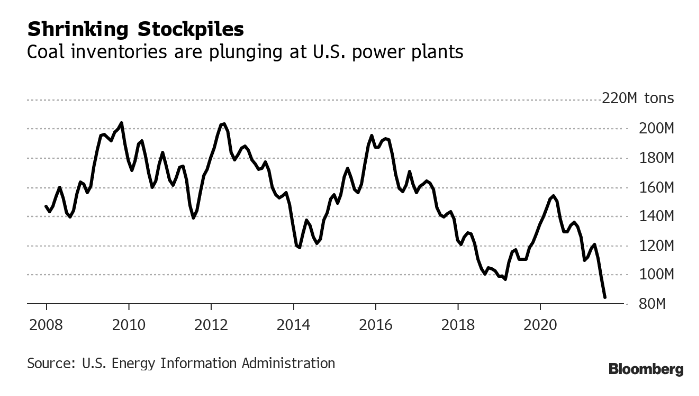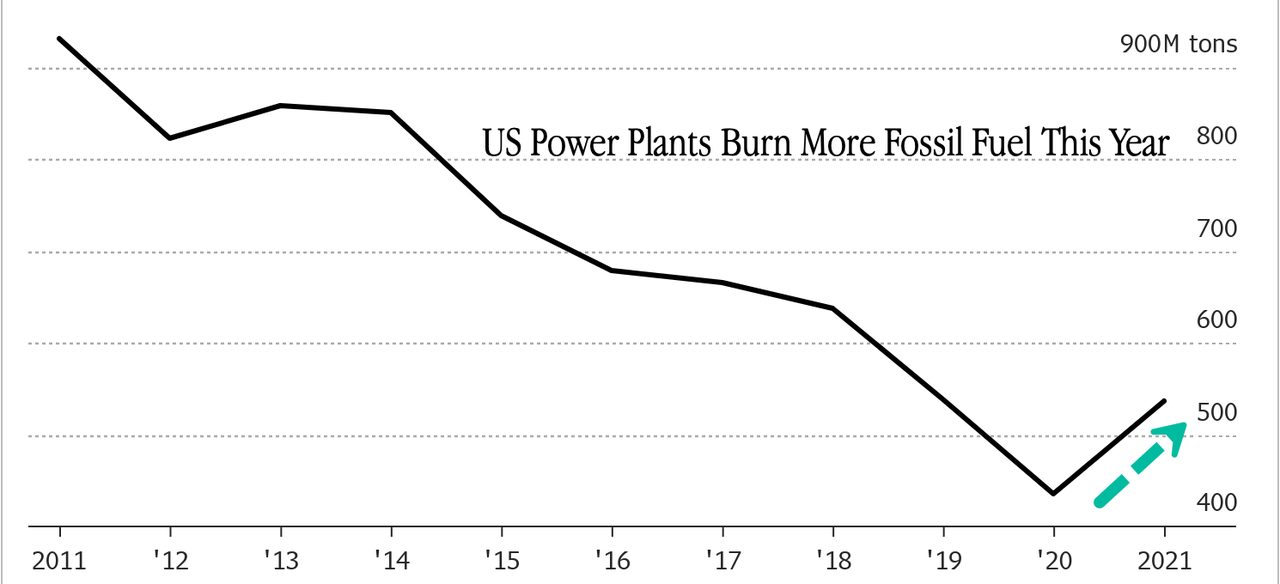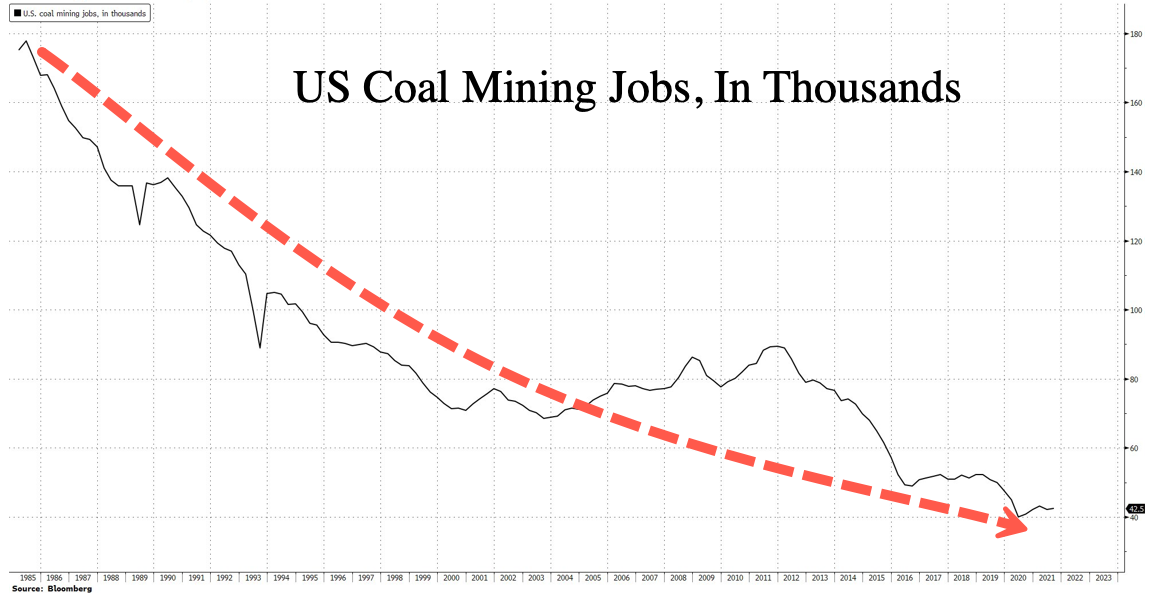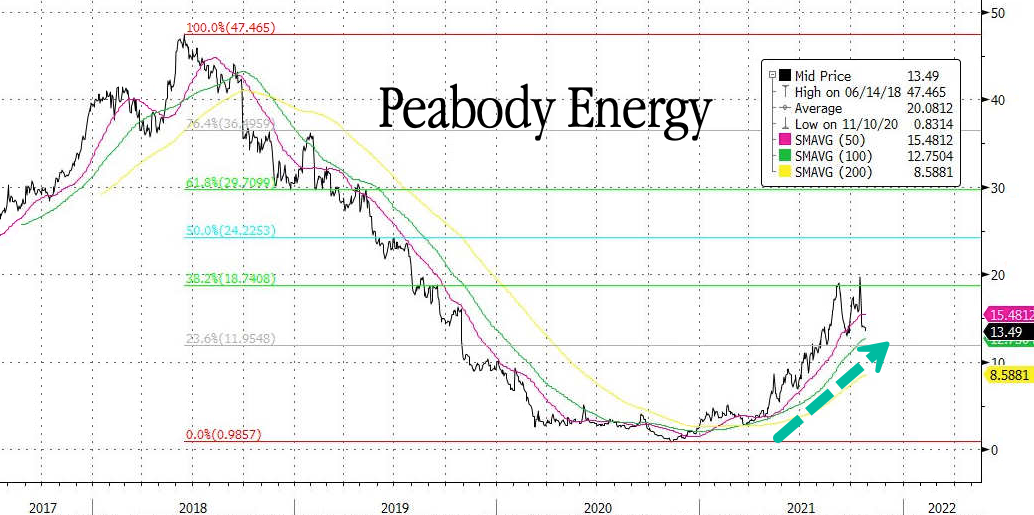US Coal Stockpiles Slump To Two Decade Low As Power Plant Demand Surges
One of the biggest ironies this year is the transition from fossil fuel generation to green energy has created a global energy crisis that is forcing the U.S., among many other countries, to restart coal-fired power plants ahead of the Northern Hemisphere winter. Coal is roaring back this fall but supplies are not catching up with demand.
According to Bloomberg, US coal supplies dropped to 84.3 million tons in August, the lowest level since 1997.

As of August, about a quarter of all US power generation was derived from coal. As winter approaches, coal-fired power plants will become a more significant percentage of all U.S. power generation.

Power plants are expected to burn 19% more coal this year because soaring natural gas prices have made it uneconomical to produce power. In return, this is forcing generators to burn through coal reserves much quicker and has caught coal producers off guard who cannot bring new coal to the market.

"The ability for the producers to respond is not what the utilities thought it was," Paul Lang, CEO at Arch Resources Inc., said during a conference call Tuesday. "It just doesn't exist anymore."
Weeks ago, Ernie Thrasher, CEO of Xcoal Energy & Resources, the largest U.S. exporter of fuel, said demand for coal will remain robust well into 2022. He warned about domestic supply constraints and power companies already "discussing possible grid blackouts this winter."
He said, "They don't see where the fuel is coming from to meet demand," adding that 23% of utilities are switching away from gas to burn more coal. There are not enough coal miners to rapidly increase mining output.

Joe Craft, CEO for Oklahoma-based miner Alliance Resource Partners L.P., warned Monday, "coal stocks for customers are at critically low levels."
Inventory declines came on very quickly as the global energy crisis emerged this year. Stockpile trends were well in line for the first half of the year, but stockpiles began to drop as soon as July rolled around.
S&P Global Market Intelligence data shows Central Appalachia coal prices have surged 39% since the start of the year to $75.50 a ton due to supply constraints.
Matt Preston, director of North American coal markets research for Wood Mackenzie Ltd., said total U.S. inventories could slump by 50 million tons by the end of the year:
"Stockpiles are coming down very rapidly," Preston said. "If we have a cold winter, and there has been lots of talk that there could be a cold winter, we could see some issues."
With natgas, coal, and oil prices all soaring is a clear signal the green energy transition will take decades, not years. Walking back fossil fuels for unreliable clean energy has been a disaster in Asia and Europe. It could soon cause trouble in the U.S. These power-hungry continents are scrambling to source fossil fuel supplies as stockpiles are well below seasonal trends ahead of cooler weather.
Suppose La Niña conditions produce cooler weather trends in certain parts of the world. In that case, especially, Asia, Europe, and the U.S., coal demand could continue to increase, which would benefit Peabody Energy Corporation's share price.

So far, Peabody's earnings have tripled as coal roars back under a Biden administration.
Disclosure: Copyright ©2009-2021 ZeroHedge.com/ABC Media, LTD; All Rights Reserved. Zero Hedge is intended for Mature Audiences. Familiarize yourself with our legal and use policies ...
more


